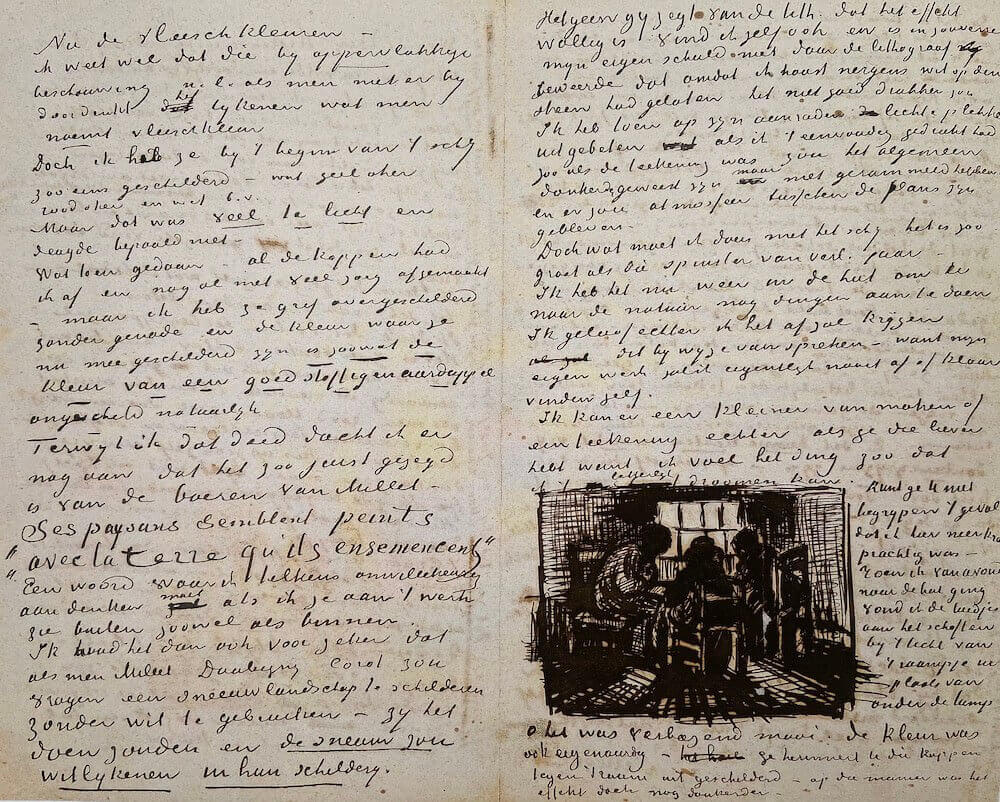Letter 05/01/1885 - by Vincent van Gogh

The painting of the potato eaters is very dark; for instance, hardly any white has been used in the white, but simply the neutral color you get when you mix red, blue, and yellow together, e.g.,
vermilion, Paris blue, and Naples yellow. That color is in itself a fairly dark gray, but comes across as white in the painting.
I will tell you why I have done that. Here the subject is a gray interior, lit by a small lamp. The gray linen tablecloth, smoke-stained walls, the dusty bonnets in which the women have been
working on the land, all that, when you look at it through your eyelashes, seems in the light of the lamp to be a much darker gray, and the lamp, although it is a reddish-yellow light, seems
still lighter - and very much so - than the white in question.
And now the flesh colors: I know that at a superficial glance - when you don't think it through - they look rather like what people call flesh colors. However, when I started painting this,
I painted them, for instance, with some yellow ochre, red ochre, and white. But that was much too light and was certainly not right at all. So what to do? I had finished the heads and done them
with great care, but I promptly painted them over without mercy, and the color they are now painted with is rather like the color of a good, dusty potato, unpeeled, of course.
While I did that, I thought of what was so rightly said of Millet's peasants: "Ses paysants semblent peints avec la terre qu'ils ensemencent" ["Hi s peasants look as if they were painted with
the earth they were sowing"]. Words that automatically come to my mind when I see them working, outside as well as inside.
I am, however, quite sure that if you were to ask Millet, Daubigny, or Corot to paint a snowy landscape without using white, they would be able to do so, and the snow would look white in their
paintings.
As regards bright contemporary paintings, I have in recent years seen very few. But I have thought about the question a great deal. Corot, Millet, Daubigny, Israels, Dupre, and others painted
bright paintings as well, ones in which you can see into every corner and depth, however deep their range.
But those I have named are none of them people who paint the local tone literally; they follow the spectrum they have started with, carry through their own thoughts in color and tone and drawing.
And that their lights are mostly fairly dark grays in themselves, which in a painting seem light by contrast, that is a truth which you will probably have the opportunity to observe every day.
You will understand that I don't say that Millet uses no white when he paints snow, but I claim that he and other colorists, if they want to and set themselves to do it, would deliver it in the
same way that Delacroix says of Paolo Veronese, that he painted pale, fair, nude women in a color that in itself is reminiscent of sludge.




















